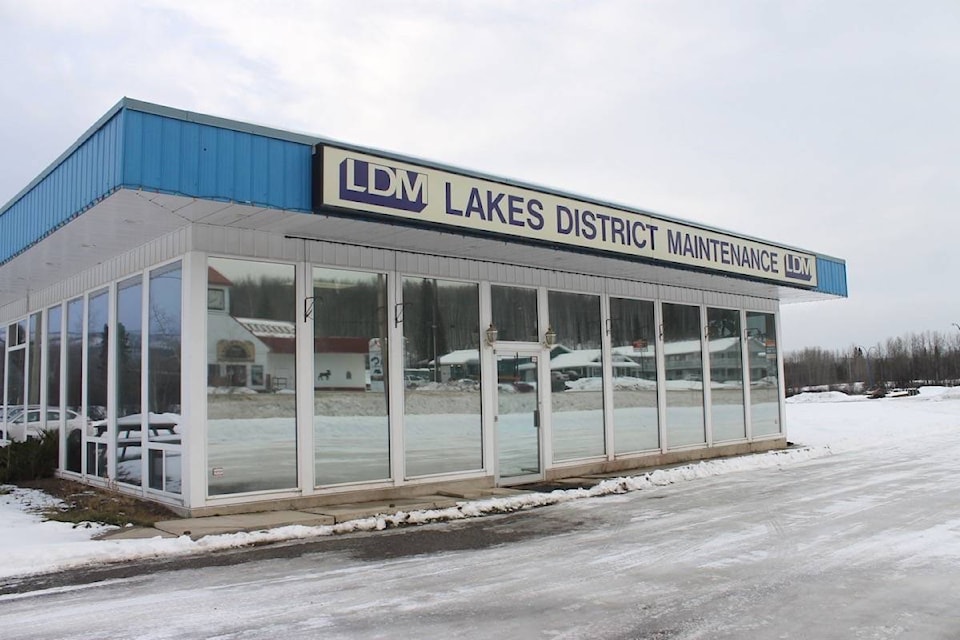On a new Facebook page created to discuss local road conditions, some residents were quick to point out that road conditions often change once they drive past Priestly Hill, approximately 32 km east of Burns Lake.
The Priestly Hill area marks the boundary between the highway sections maintained by Lakes District Maintenance (LDM) and Yellowhead Road & Bridge.
“We travelled from Rose Lake to Vanderhoof early a.m. today… terrible roads right up to the top of Priestly Hill, then clear all the way to Vanderhoof…. what possible reason can LDM give to justify roads like that when Yellowhead can obviously do the same job so much better,” posted Burns Lake resident Rande Mcmurray on Nov. 26 on the new Facebook page called ’Lakes District Hwy. 16 complaints and bouquets.’
According to Mike Philip, LDM’s quality assurance manager, these complaints are only accurate to some extent. Although the Priestly Hill area marks where LDM’s coverage ends, it also marks the beginning of a different weather pattern.
“The [road maintenance] service areas are actually specifically made for where there’s different weather patterns,” he explained. “Sometimes as soon as you pass Priestly Hill there’s less snow.”
Philip said it’s not uncommon to see different weather patterns within short distances.
“For instance, Smithers might get more snow than us, or we might get more snow than them. They recently got some freezing rain that we didn’t, and they were really fighting it while our roads looked wonderful; we didn’t do anything different, we just didn’t get the freezing rain.”
Although there have been some rumours in town of LDM having less manpower than last year, Philip says LDM has the exact same number of trucks and manpower this season.
“Nothing has changed from last year,” he said. What has changed, however, is that the weather so far has been unusual.
READ MORE: How does LDM keep our roads safe in winter?
“It’s been tougher than normal weather-wise,” said Philip. “We definitely had a lot more snow than we normally would [by this time of the year], especially not getting breaks for days in a row; the past few weeks have been unrelenting. It’s not really the resources a lot of times, but the conditions you’re up against,” he continued. “Sometimes no matter what you do, how many trucks you have, it doesn’t matter… you just can’t beat mother nature.”
Philip explained that although road maintenance companies will often make the best possible decisions given the information that they have at the time, weather conditions might change unexpectedly.
“When you have freezing rain, you have to be careful with what you do beforehand. We recently had some snow on the side of the roads, and we knew that the freezing rain was coming, so we purposely left some snow on those roads. If we leave a little bit of snow, at least that crunchy snow is there for some traction.”
Philip said Lakes District Maintenance has staff available 24/7, and that given the recent weather conditions, many crew members have been working longer hours.
“We’ve had our guys come earlier, staying later, doing lots of overtime; we’re doing what we can with the manpower we got,” he said.
Philip adds that the community can rest assured knowing that LDM staff are doing the best they can.
“Our guys take a lot of pride in doing a good job, they really do. Their families drive on these roads, my family drive on these roads. We all want the roads to be safe.”
He also encouraged residents who have concerns to call LDM’s toll free number (1-888- 255-8055) at any time.
“All calls are recorded and we take those calls seriously, so if people have legitimate concerns, that number is available.”
Lakes District Maintenace’s coverage extends from the Priestly Hill area to Hungry Hill (approximately 32 km west of Houston), and from Babine Lake to the Southside.
Which road gets plowed first?
B.C. highways are classified A, B, C, D and E, and are maintained in that order. Winter highway classifications in B.C. are based on traffic volumes and function.
A highway with an “A” classification is allowed up to four centimetres before it must be plowed, while an “E” is allowed up to 25 centimetres.
In 2014, the Ministry of Transportation and Infrastructure changed the maintenance classification for Hwy. 16 to a Class A level, meaning more maintenance and quicker response times. Hwy. 35 is a class B road for winter maintenance.
@flavio_nienow
newsroom@ldnews.net
Like us on Facebook and follow us on Twitter.
